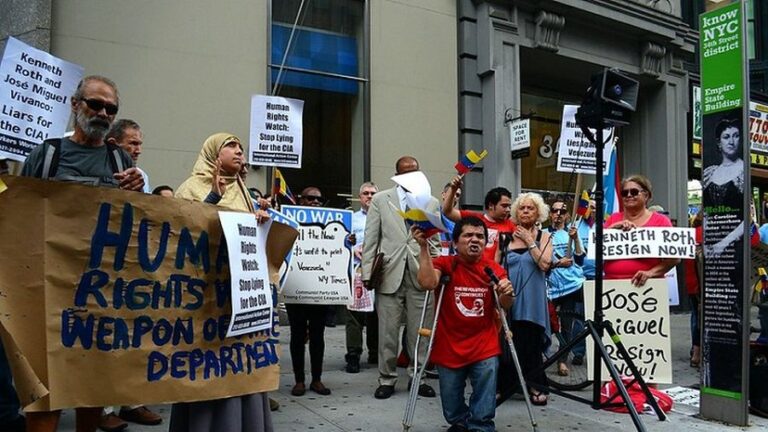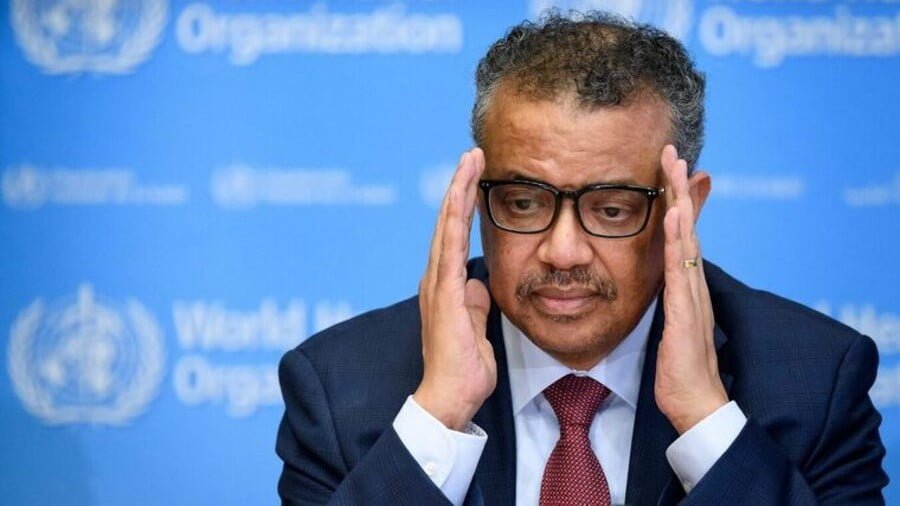South Korea’s Green New Deal: Myths versus Realities
The Green New Deal is a progressive wish list that combines the reduction of carbon emissions with investments in Green technologies and Green jobs. In the United States, the Green New Deal has largely remained aspirational: a non-binding resolution that has not yet come to a vote in Congress.
In South Korea, on the other hand, the Green New Deal is a policy reality.
In 2020, the ruling Democratic Party put its version of a Green New Deal at the center of its platform. When South Korea held its parliamentary election that April in the middle of a worldwide pandemic, that platform helped propel the liberal Democratic Party bloc to a landslide victory and a legislative super-majority. Emboldened by this victory, the liberal Moon Jae-in administration officially made the Green New Deal a part of government policy several months later.
It wasn’t the first time that a South Korean government tried to address these problems. “When we heard about the Green New Deal in 2020, I asked myself, ‘Haven’t we seen this policy before?’ We had a pretty similar policy in the Lee Myung-bak administration that was called Green Growth,” remembers Lee Taedong, a political scientist at Yonsei University. Beginning in 2008, the conservative Lee Myung-bak government had indeed promoted a green stimulus program that addressed the twin crises of climate change and economic stagnation.
For the Moon Jae-in government, which took office in 2017, the Green New Deal was not just an electoral ploy. South Korea was facing a reputational crisis. Successive governments had stressed the importance of addressing climate change. But the country was, as of 2018, the seventh largest emitter of carbon in the world.
“South Korea is the ninth largest consumer of energy in the world, and 95 percent of that energy is imported from outside,” notes Hong Jong Ho, an economist at Seoul National University. “It has the highest nuclear power plant density in world and the lowest renewable proportion among the 38 countries of the Organization for Economic Cooperation and Development.”
Contributing to South Korea’s dirty profile was its export of coal-fired power plants. “Along with Japan and China, South Korea was a lead financer of coal projects, mainly in Southeast Asia,” explains Kim Joojin, the managing director of the Korean NGO Solutions for Our Climate. “Because of abundant financing, countries like the Philippines, Indonesia, and Vietnam had a lot of new coal-fired power plants in their future that were really straining the global carbon budget.”
Korean climate activists have worked hard to narrow the gap between the government’s rhetoric and its actual behavior. A key part of Korea’s climate action community are young people. “It’s limited how much pressure we can exert, as youth, on the government,” points out Kwon Yoo-Jung, an activist with Green Environment Youth Korea (GEYK). “But we have to communicate that we are aware of the financing of coal-fired plants abroad and we’re not proud of it and it has to stop, even though the government is not doing this in front of us but in other countries.”
Thanks to a sustained campaign of civic activism, the South Korean government finally announced this year that it would no longer finance overseas coal-fired plants. The Moon Jae-in government also pledged in the lead-up to the Glasgow climate meeting that it would, by 2030, reduce greenhouse gas emissions to 40 percent below 2018 levels on the way to becoming carbon neutral in 2050. It has also promised to increase wind and solar energy production by more than double by 2025.
One of the chief sticking points in the country’s overall energy transition, however, has been South Korea’s singular focus on rapid economic growth. In the early 1960s, South Korea’s per capita GDP was comparable to that of Ghana or Haiti, and 40 percent of the population lived in absolute poverty. In the space of little more than a single generation, however, South Korea became a wealthy country and by 1996 had joined the OECD. Fossil fuel, almost all of it imported, was an essential ingredient of that economic success.
Today, the country struggles to define a different kind of economic success and a different approach to energy policy. South Korea’s Green New Deal is the latest attempt to square the often-conflicting demands for growth and environmental action. It has proven to be simultaneously an inspiration for other countries and a lightning rod for criticism of Korea and the Moon administration.
Origins of the Green New Deal
In 1998, the Kim Dae-Jung administration began to organize South Korea’s first serious response to climate change with a top-level committee on the topic and a comprehensive national plan. Not much came of it. It wasn’t until a decade later that Korea became more proactive.
Lee Myung-bak had built a reputation as the head of Hyundai’s engineering and construction division. As mayor of Seoul, he developed a new profile as something of an environmentalist when, among other things, he removed an old elevated highway in the capital to restore an old waterway. Nicknamed the “bulldozer,” Lee entered the presidential office with the potential to combine both economic growth and sustainability.
Shortly after becoming president in 2008, Lee unveiled his “Green Growth” program. “Lee Myung-bak’s policy vision was one of Green competitiveness,” explains Lee Taedong. “He wanted to make South Korea the seventh largest economy by 2020 and the fifth largest by 2050.” The new president also pledged considerable government funds—56.9 trillion won or about $60 billion—for the mitigation of climate change and the securing of energy independence. Another $30 billion was allocated to creating new engines of economic growth, while $30 billion more went into improving quality of life and enhancing the country’s international standing.
The Green Growth program aimed to decouple growth and carbon emissions by reducing fossil fuel use, expanding green infrastructure, and growing the economy, albeit sustainably. Expanding nuclear power was a key part of the Green Growth plan, to reduce reliance on fossil fuels and lessen the country’s reliance on imports. Nuclear energy currently provides between one quarter and one third of the country’s electricity.
Lee also imagined that South Korea could become a green growth leader in the international community. He attracted the Global Green Growth Initiative, an intergovernmental development organization, to establish its headquarters in Seoul in 2010. That same year, the UN organization devoted to assisting the Global South in addressing climate change, the Green Climate Fund, also set up shop in Seoul.
Central to the Green Growth program was separating growth from its usual connection to increased carbon emissions. “Some European countries achieved decoupling of economic growth and greenhouse gas emission,” Lee Taedong explains. “Those that engaged in an emission trading system are more likely to achieve decoupling.”
South Korea under Lee Myung-bak did not, however, achieve decoupling. The country’s economy grew modestly during his five-year term—but its greenhouse gas emissions also continued to rise. Nor did the Green Growth plan achieve much in the way of economic equity. “One big part of Green Growth was the aim to create jobs,” Lee Taedong continues. “However, there is no measure or report of how many jobs were created.”
Another criticism of the Green Growth initiative was all the money that went into construction projects. “We spent a lot of money,” Lee points out, “but we didn’t get a lot of environmental goods from it. For the future, we need to consider how we steer these stimulus funds to make sure that we build up real green infrastructure.”
Elements of the Green New Deal
South Korea’s most recent parliamentary elections took place in April 2020. The ruling Democratic Party, along with its partner Platform Party, won 180 out of the 300 seats. With the Green New Deal as a centerpiece of its platform, the Democratic Party increased its parliamentary delegation by 57 seats and gained a legislative supermajority.
The ruling party’s Green New Deal manifesto contributed to its electoral success. “The key concepts of the Green New Deal manifesto were to achieve carbon neutrality and achieve a carbon-zero society vision by 2050,” explains Kim Joojin. “It promoted market mechanisms including RE100 [a global initiative bringing together the world’s most influential businesses committed to 100% renewable electricity] and allowed more renewable energy producers to supply renewable energy to more consumers. It prohibited coal financing by public institutions. It talked about reforming the power sector and how that sector has not been helpful in terms of renewable energy deployment, which is still an ongoing problem.”
In July, after considerable discussion of the need for a pandemic-related economic stimulus, the government announced the Green New Deal as official policy in July 2020. But, as Kim Joojin points out, the new initiative was not focused on climate issues. It devoted only $65 billion to the reduction of carbon emissions by about 12 million tons by 2025. “That’s about $5,000 per ton,” he points out. “The current price of carbon is $33 ton, so reducing carbon emissions was not really part of the discussion.”
Instead the focus was on infrastructure—such as zero-energy buildings, restoring ecosystems, and creating safe water management systems—as well as Green innovation with renewables, electric vehicles and other Green technologies. “My intuitive sense is that it’s really a repackaging of already existing policies,” Kim continues. “So, there was a lot of criticism coming from the public, especially young people, who were asking, ‘Is it a Green New Deal or a Grey New Deal?’”
The price tag for the program is 73.4 trillion won or about $62 billion. The funding is thus less than what the earlier administration devoted to the Green Growth initiative.
Another key element of the program is the creation of 659,000 jobs by 2025. Lee Taedong warns that the Green Growth initiative didn’t follow through on its job promises. “We don’t want to see the same outcome from the Green New Deal. If we don’t see clear evidence, this policy won’t be worth very much,” he suggests.
The Green New Deal is part of a larger government stimulus package that includes a “Digital New Deal” and a stronger social safety net. It is intriguing that the Korean government separated out the environmental component of its stimulus package from the equity elements and the high-tech digital projects. It is also interesting that, although the investments into digital infrastructure are less than half of those going into the Green New Deal, they were projected to create many more jobs (903,000) by 2025.
Many environmental activists in Korea view the Green New Deal as necessary but insufficient. Six youth organizations held a press conference two months before the government released the program demanding that the government detail how South Korea would reach net carbon zero in 2050, that it protect and retrain workers in carbon-intensive industries, and that it create a mandatory educational curriculum for climate change and the environment. In addition, the groups demanded that the government phase out coal by 2030 and increase the share of renewable energy.
When it was launched, the Green New Deal reflected only a small portion of these demands. Still, one of those youth groups, Green Environment Youth Korea (GEYK) participated in a video commending the Korean Green New Deal. “We considered the Green New Deal a milestone,” explains GEYK activist Kwon Yoo-Jung. “We wanted our youth to understand why it was so important, to make sure that they understand that it’s a Green New Deal not a Grey New Deal.”
Korea’s Overall Energy Picture
Lee Myung-bak had hoped that his Green Growth program would catapult South Korea to the very top ranks of the global economy. By 2020, South Korea had risen from sixteenth place to the tenth spot, just ahead of Russia. The country hadn’t become the seventh largest economy in the world as Lee had hoped, but it was still an impressive achievement.
That growth was accompanied by increased carbon emissions, which peaked finally in 2018. Traditionally, Korean economic growth has been associated with heavy industry: car manufacturing, shipbuilding, steel production. And that industry has drawn heavily on the energy derived from fossil fuel.
Currently Korea is home to three of the largest oil refineries in the world, all located near the zones of heavy industry in the southeast: the SK energy complex in Ulsan, the GS-Caltex refinery in Yeosu, and the joint project of Aramco and Hanjin also in Ulsan. South Korea also has three of the top seven coal-fired power plants in the world at Taean, Dangjin, and Yeongheung. These and other facilities have helped make South Korea a leader in the production of fine particulate matter—a key element of air pollution—with highest PM2.5 concentration in the OECD.
These fossil fuel interests form a powerful lobbying force in Korean society that has made a transformation of the energy infrastructure very difficult. “The industry-related stakeholders, including academics in government, are very powerful, their lobbying power is very strong,” notes Hong Jong Ho.
This is not just a domestic problem. South Korea has also been a key player in promoting fossil fuels around the world. Until recently, it was financing coal-fired power plants, particularly in Southeast Asia. Its shipping yards also produce many of the vessels that transport fossil fuels. For instance, South Korean companies have a virtual lock on the production of liquefied natural gas (LNG) tankers, manufacturing 98 percent of them in 2018 and securing 94 percent of orders so far this year.
“The Korean Export-Import bank provides a lot of money for oil and gas financing,” explains Kim Joojin. “In fact, it’s 13 times higher than coal financing.” South Korea is no longer financing overseas coal projects, but it didn’t join the 20 countries that agreed in Glasgow to end public financing of all overseas fossil fuel projects by the end of 2022. Earlier, the Asian Development Bank made a similar pledge, so Korea is increasingly out of step with the region as well. “There’s a discussion in Korea as well as in Europe about whether gas can be considered Green, and behind that is a strong gas lobby,” Kim continues. “COP26 struck a critical blow against coal. The next climate discussion will be gas.”
Given the power of fossil fuel interests, it’s not surprising that South Korea has such a dismal record of incorporating renewable energy into its overall electricity generation. “In 2020, renewables in South Korea were only 7.2 percent of its energy,” explains Hong Jong Ho. “The OECD average is over 30 percent. Germany and the UK are close to 50 percent, while Denmark and Austria are around 80 percent. Even Japan and China are close to 20 percent.”
Most of South Korea’s electricity production is derived from coal, liquefied natural gas, and nuclear energy. “South Korea has the highest nuclear power plant density in world,” Hong continues. “Korea is the only OECD country with over 90 percent of its electricity coming from the traditional three sources (nuclear, coal, natural gas).”
Moon Jae-in ran on an anti-nuclear energy platform but has since embraced nuclear power as a way to reduce carbon emissions and maintain economic growth. But nuclear energy is not carbon-neutral. When factoring in the entire life cycle of a nuclear power plant—construction, operation, transport of spent fuel, decommissioning—such facilities produce three to four times as much carbon emissions as solar panels across their life span.
Another important aspect of Korea’s energy market is the pricing. “The energy market is so distorted,” Hong Jong Ho points out. “No country in the OECD has this type of energy price system. The government totally controls the price of energy.” Electricity is generated by the Korean Electricity Power Company (KEPCO), whose six subsidiaries effectively form a monopoly and which favors through its pricing the coal, gas, and nuclear facilities. The market power of KEPCO keeps the prices of renewable energy inflated and discourages the entrance of private actors into the renewable sector.
The over-emphasis of coal, gas, and nuclear also has employment implications. “If you can expand the renewable energy sector alone, we can create a lot of jobs in the coming years.,” Hong continues. “Compared to nuclear or coal, the renewable sector can create many more jobs.” According to his calculations, a moderate transition scenario would create 24,000 jobs by 2050, an advanced scenario would generate 270,000 jobs, and a 100 percent renewable future would create 500,000 jobs. In comparison, about 490,000 Koreans are currently employed directly and indirectly in the auto sector.
The resistance to renewables doesn’t come only from the coal, gas, and nuclear lobbies. Farmers are often uncomfortable with on-shore wind power while fisherfolk are often opposed to off-shore wind. It’s not just a question of livelihoods. It’s often a question of values.
“The older generation, including my parents, endured prolonged poverty in the 1960s,” Hong recalls. “Their goal was the modernization of Korea. They all know that fossil fuel and nuclear have been the driving source of energy to have the rapid economic growth in the 1960s, 1970s, and 1980s. They are so accustomed to this idea of supply-oriented, centralized generation. On the other hand, renewable wind and solar are very different, with distributed generation and an emphasis on demand management, energy efficiency, and reducing energy consumption. This is an idea very different from what the older generation has become accustomed to.”
Hong laughs when he thinks about how his parents view his work. “Whenever I talk to my parents, my father scolds me. ‘Your idea is wrong,’ he says. ‘how can wind and solar generate enough electricity to continue to power our economic growth in Korea. That’s absurd!’”
The focus on overcoming poverty, dealing with political disruptions, and ensuring that Korea becomes an advanced industrialized country has meant that “Koreans generally focus on the present,” Hong adds. “The future is not something they have the presence of mind to consider. But the climate crisis is a long-term problem that requires a consistent policy to be successful.” Still, the situation is changing. “The Korean people are slowly trying to understand the circular relationship between economy, climate, and jobs,” he continues, “and familiarize themselves with the virtuous cycle between climate, economy, and more employment.”
One hopeful sign is a statement in June 5, 2020 from 226 local government heads—mayors and provincial governors—that declared a climate emergency and called for a transition to a sustainable society. Since there are only 229 local autonomies in Korea, this list represents virtually all the heads of local governments.
“Irrespective of political party or whether they’re liberal, conservative, or progressive, they all joined together to say that the climate emergency is a critical issue,” Hong points out.
Overseas Coal Financing
Over the years, South Korea has financed coal-powered plants in India, Morocco, and Chile. But it has focused on Southeast Asia where it financed three projects in Indonesia and seven in Vietnam. This kind of financing was long considered a natural extension of South Korea’s own coal-powered industry.
But that picture began to change about four years ago. Civic pressure on industry and government was enormous. “There were ads in publications with global circulation, like one that said ‘President Moon, is this really Korea’s idea of a Green New Deal?” Kim Joojin recalls. “And there was one in the Financial Times that read ‘Samsung, make the right call on coal.’ There were demonstrations in front of big institutions.”
Young people were a major part of that civic pressure. Established in 2014, Green Environment Youth Korea (GEYK) is an organization of around 60 youth activists who are working to ensure that youth are at the forefront globally to press for climate justice. In a busy district of Seoul, they participated in a campaign of chalk painting on the sidewalk devoted to phasing out coal as well as a social media campaign that bombarded key players—Hanabank, KEPCO, the Blue House—to communicate that citizens were not happy with their policies. Back in 2017, they were involved in a coal-ending bicycle trip from the city of Cheonan to Dangjin, where the largest coal plant in the world at the time was located. “This plant was not something to be proud of,” says GEYK activist Kwon Yoo-Jung. “It was something to be ashamed of given the impact of the coal-fired plants on community health.”
In 2017, debate over coal financing began in the Korean parliament. “In 2018, two Korean pension funds announced that it would make no new coal commitments,” Kim Joojin continues. “In 2020, KEPCO, the national utility finally decided to no longer sponsor coal projects. Samsung said it would not do any more coal financing in the future. Also that year, there was a national debate around the Korean-financed projects in Indonesia and Vietnam. Those projects eventually went forward, but close to 100 financial institutions committed to not financing coal projects. Coal became a no-go zone in our financial sector.”
As part of their activism, GEYK members went to the areas overseas where the coal plants were planned under the banner “People Live Here.” South Korean activists linked up with residents in Indonesia who were protesting the plants. “Due to the impact of the coal plant emitting so much air pollution, they can’t continue their way of living,” Kwon Yoo-Jung notes. “This is a moral question as well. Local residents had no say in the decision-making process, even though they suffer all the impact from the project. The community faces severe health issues. People are moving out of village.”
Furthermore, she explains, the coal-fired plant in Indonesia will soon become a “stranded asset,” because electricity from solar energy will be cheaper to produce than electricity from coal three years after the plant comes on line.
The pressure campaign culminated in April 2021 at a summit convened by President Joe Biden when Moon Jae-in announced no more coal-financing projects in 2021. It was part of a trend. “Japan made a similar announcement at the G20 in the United Kingdom the following June,” Kim Joojin notes. “At the UN General Assembly in September, Xi Jinping said that China would no longer finance coal. There’s some discussion about how specific these commitments are and what they will cover, but the heads of the state of these economies were saying that coal financing was wrong.”
As a result of these announcements, “Indonesia and Vietnam had to dramatically cut their coal portfolios, especially new coal projects,” he adds.
Phasing out coal is an integral part of reforming Korea’s energy sector. The official date for a phase-out is 2050, though the National Council on Climate and Air Quality, chaired by former UN General Secretary Ban Ki-moon, has recommended an earlier date of 2040 or 2045. “Five years ago, there was not much discussion of whether coal is the right thing to do,” Kim continues. “There were 11 coal-fired plants commissioned in 2016-17, and seven began construction. But then came efforts from provincial governments, and the social license of coal power dramatically changed.”
“The reality is that our government can provide a more ambitious coal phase out, for instance in the 2030s,” he points out. “But what’s bogging down our government is how to compensate the already made investments. The same discussion is taking place in Germany around coal phase-out, but here in Korea at least there is practically no coal mining.”
Korea has made a commitment to net zero carbon in 2050. But with such a large coal portfolio, meeting the goals in the near term will be difficult. Cutting carbon emissions by 40 percent by 2040 “relies on overseas offsets and carbon sinks that are not considered policies with the most environmental integrity,” Kim notes.
With its Green New Deal, South Korea is addressing both climate change and economic equity. But the effort is not yet commensurate with the challenge. Quoting Kathy Jetnil-Kijiner, a poet from the Marshall Islands who addressed the UN Climate Summit in 2014, Kwon Yoo-Jung concludes, “We deserve to do more than just survive. We deserve to thrive.”







